The National Food Security Mission 2025 is focused on increasing the production of rice, wheat, and pulses across India. This scheme aims to help farmers grow more of these important crops using better farming methods and expanding the areas under cultivation. Here, you will find everything about the National Food Security Mission including its benefits, goals, features, eligibility criteria, and how to apply.
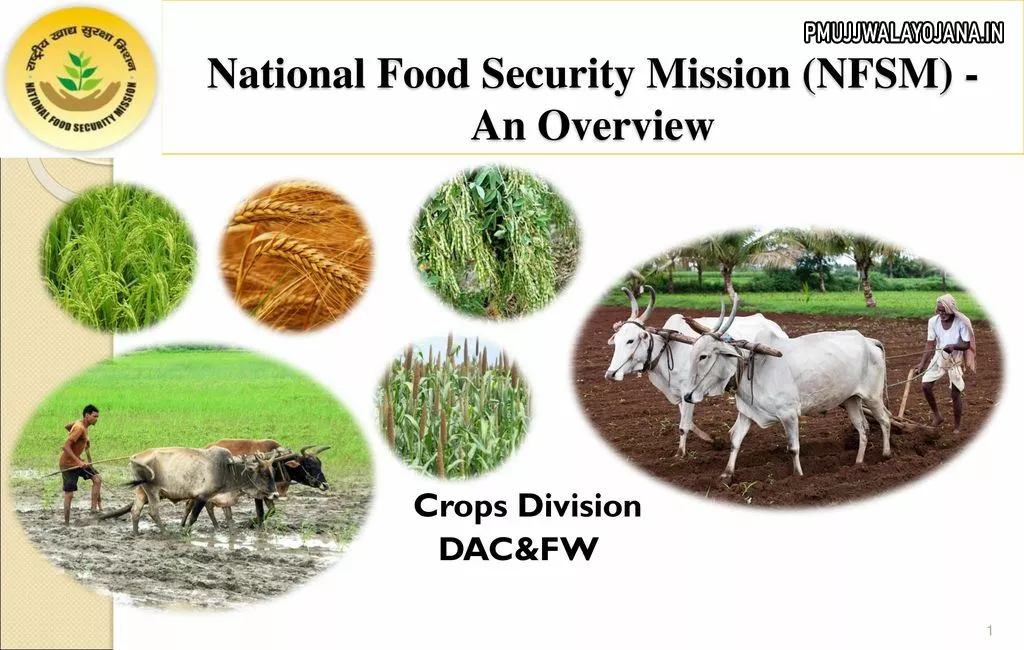
About National Food Security Mission 2025
The Government of India started this mission to improve annual production of rice, wheat, and pulses. The target is to increase rice by 10 million tonnes, wheat by 8 million tonnes, and pulses by 2 million tonnes each year. The project began in October 2007 and continues with a focus on improving soil health, boosting crop yields, and supporting farmers’ income, especially in areas with low productivity but high potential.
Objectives of National Food Security Mission
The main goal is to increase the production of rice, wheat, pulses, coarse cereals, and nutri-cereals in a sustainable way in selected districts across India. This is done by expanding farming areas and improving productivity at the farm level. The mission also works to restore soil quality and help farmers increase their earnings and confidence.
Important Details of the Mission
| Scheme Name | National Food Security Mission |
|---|---|
| Launched By | Government of India |
| Beneficiary | Indian Farmers and Citizens |
| Objective | To Increase Production of Rice, Wheat, and Pulses |
| Official Website | https://www.nfsm.gov.in/ |
| Year | 2025 |
Main Features and Benefits of National Food Security Mission
- A program to increase rice, wheat, and pulses production every year.
- Production targets: 10 million tonnes more rice, 8 million tonnes more wheat, and 2 million tonnes more pulses.
- Focus on raising farm productivity using sustainable practices.
- Helps restore soil health to support better crop yields.
- Supports farmers’ income by improving the farm economy.
- Special focus on areas with low crop output but high potential.
- Started in 2007 and kept evolving to meet current agricultural needs.
Mission Strategy
The mission works on improving farming in low-yield and high potential districts, including rain-fed areas. Planning is based on local climate and soil conditions. The mission promotes growing pulses in fallow rice fields, on rice bunds, or by combining pulses with other cereals and oilseeds. Funds are closely monitored to reach farmers on time for best results.
Mission Structure
National Level
A General Council led by the Union Agriculture Minister guides and reviews the mission, making policy decisions and updating mission guidelines. An Executive Committee under the Agriculture Secretary approves yearly plans and tracks progress.
State Level
States form Food Security Mission Executive Committees chaired by the Chief Secretary. These committees prepare and carry out annual plans, conduct surveys, and work on improving local farming conditions.
District Level
District committees handle planning, implementation, and monitoring of the mission with help from local agriculture departments and stakeholders.
Project Management Team
This team offers technical guidance, trains farmers, and tracks crop yields to support states and districts.
Selection Criteria for Districts
- Districts with farming area over 50,000 hectares and yields below state average for rice or wheat are included.
- Districts covering 70% of coarse cereals in a state are selected.
- All districts in 16 states were included for pulses in previous plans, including northeastern states like Sikkim.
- Districts in Left Wing Extremism (LWE) areas are part of the mission.
- Hill states like Himachal Pradesh, Jammu Kashmir, and Uttarakhand with enough rice or wheat area are included.
Fund Flow Mechanism
- Central Government releases funds to State Governments.
- States pass funds to state-level agencies, then to district-level agencies.
- District agencies provide funds to implementing agencies or beneficiaries.
- Funds are given in two installments: first from April to June after plan approval; second from October to December upon meeting conditions.
- Fund transfers are done through PFMS or Treasury for clarity.
- Central share: 60% in general states, 90% in Northeastern and Himalayan states; State share: 40% in general, 10% in special states.
Implementation Steps
- District agencies prepare annual plans based on local priorities and submit them to the State Mission Director.
- State Mission Directors prepare overall state plans.
- Districts follow the approved action plans to keep implementation smooth.
Beneficiaries and Area Identification
- 16.6% of funds go to Scheduled Caste, 8.6% to Scheduled Tribes.
- States can distribute funds according to SC/ST populations locally.
- 33% of funds are set aside for small and marginal farmers.
- 30% of funds are reserved for women farmers.
- Help is limited to 5 hectares per farmer per season.
- Seed committees verify beneficiaries and monitor seed distribution.
- NGOs and research stations assist with training, demonstrations, and evaluation.
Documents Needed to Apply
- Aadhaar Card
- Residence Certificate
- Passport Size Photograph
- Mobile Number
- Email ID
- Income Certificate
- Bank Account Details
- Ration Card
How to Apply for National Food Security Mission
- Go to the official National Food Security Mission website.
- Click on “Apply Now” on the homepage.
- Fill in your details like name, email, and phone number.
- Upload the required documents.
- Submit your application.
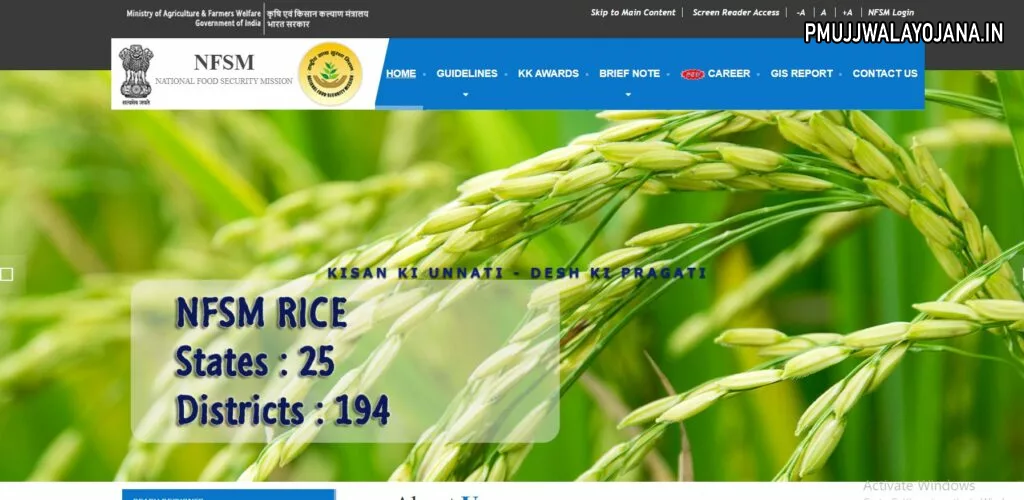
How to Login to NFSM Portal
- Visit the official NFSM website.
- Click on the “NFSM Login” option on the homepage.
- Enter your registered email ID, password, and captcha code.
- Click “Login” to access your account.
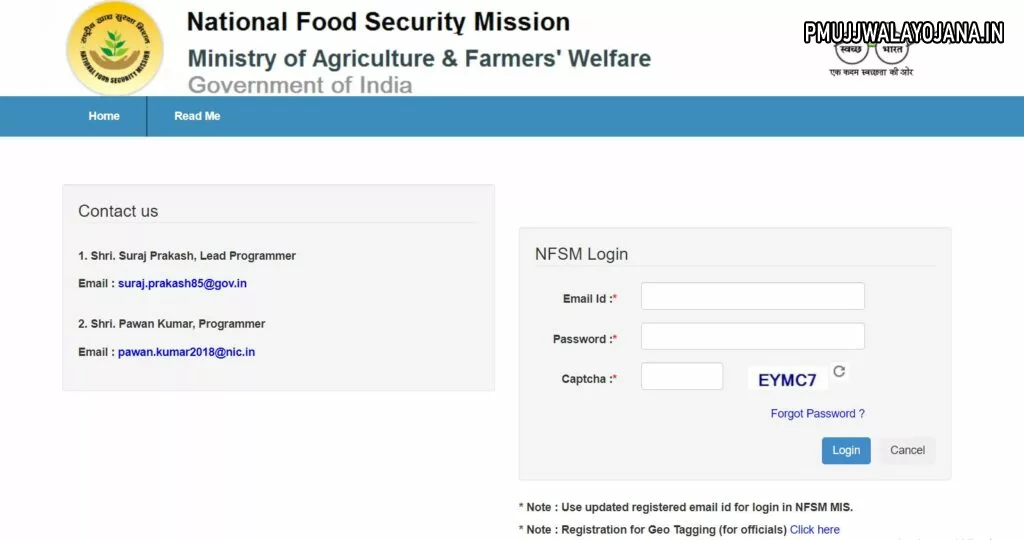
How to Download GIS Report
- Go to the official NFSM website.
- Click on the “GIS Report” on the homepage.
- Choose your category and view the details on your screen.
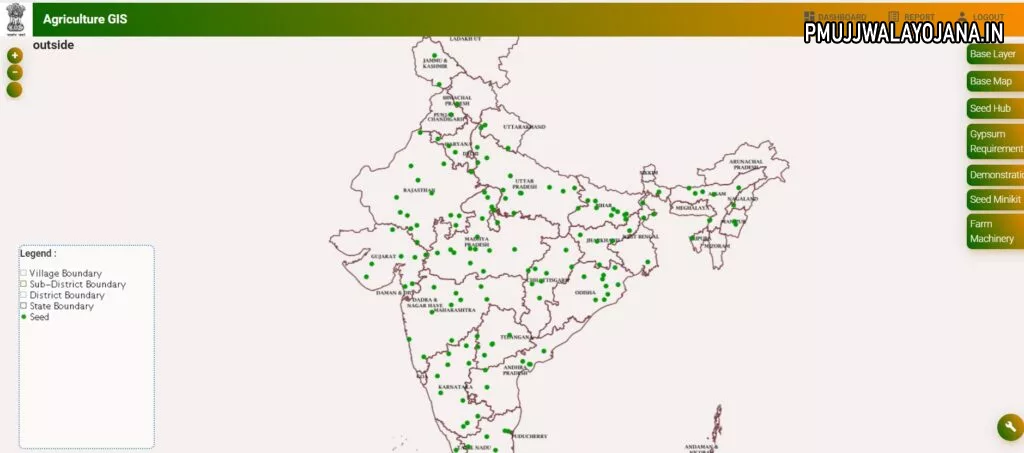
View Contact Information
- Visit the NFSM website.
- Click on the “Contact Us” link on the homepage to see contact details.
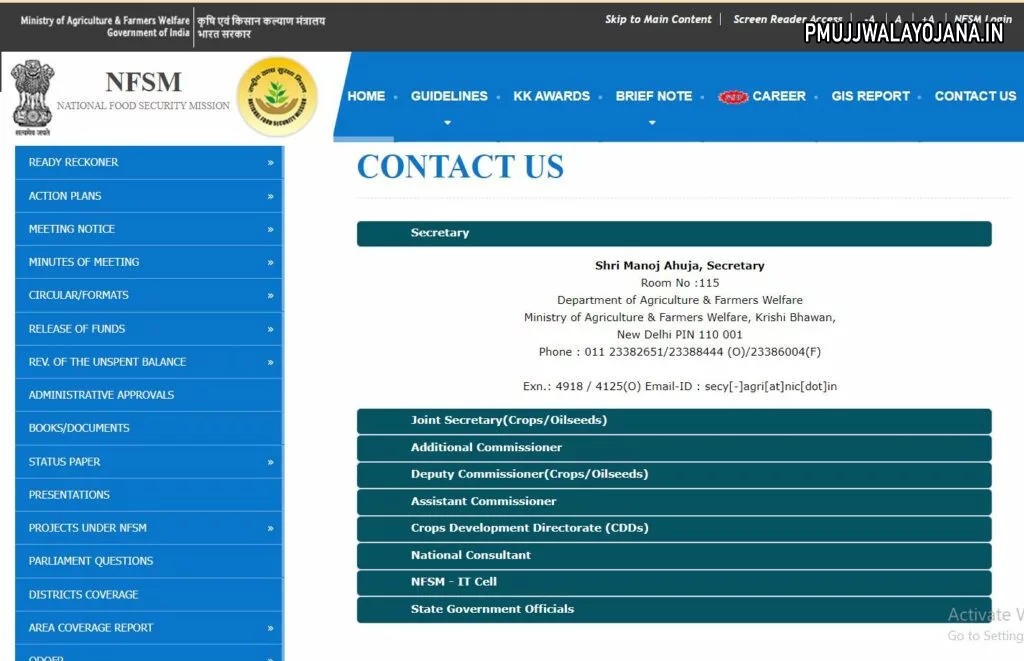
How to Download NFSM Mobile App
- Open the official NFSM website.
- Click on the “Mobile App” option on the homepage.
- You will be taken to Google Play Store.
- Click “Install” to download the app on your device.